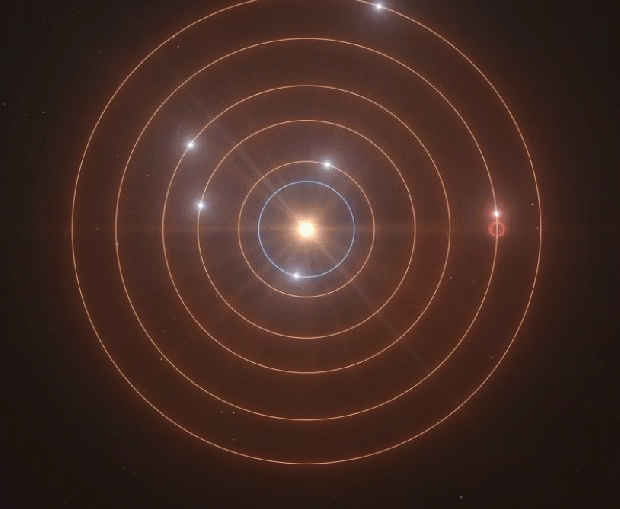These our expert picks for the best telescopes for every budget, from less than $100 to more than $10,000.

A couple enjoys watching the night sky. Credit: TWAN/Babak A. Tafreshi.
Note: This post contains affiliate links. When you buy a product through the links on this page, we may earn a commission.
Finding the right telescope within your budget can be difficult whether you’re a novice stargazer or an experienced astronomer seeking to dive deeper into the cosmos. This buyer’s guide is here to help.
First, here’s how we picked the telescopes for this article.
Our experts at Astronomy magazine have decades of hands-on experience using a wide range of different telescopes, and we keep up-to-date on the latest optical and technological improvements. For this list, we’ve considered user reviews, brand reputation, user-friendliness, and technical specifications to identify some of the best telescopes available in 2024 at a range of different price points.
Here’s our list of the best telescopes for any budget, arranged by price from least to most expensive. Enjoy!
- Why we recommend it: It’s one of the best options for those just starting their astronomy journey or needing a portable scope. Because it’s easy to set up and use, it’s also great for quick observations.
- Product details:
- Type: Reflector
- Mount: Altazimuth Dobsonian
- Aperture: 3 inches (76 mm)
- Focal length: 13.8 inches (350 mm)
- Price: $89.95
- Features and benefits: Thanks to its low-maintenance design and easy setup, this is an excellent beginner telescope for younger kids and adults alike. The altazimuth mount is straightforward to use, and it even comes with an instructional DVD to help get you started.
- What to keep in mind: The accessories are relatively basic, but that can be expected when considering the telescope’s affordable price.
- Why we recommend it: The telescope’s simplicity and included educational materials make it a perfect telescope for igniting a beginner’s interest in space.
- Product details:
- Type: Refractor
- Mount: Altazimuth
- Aperture: 2.76 inches (70 mm)
- Focal length: 27.6 inches (700 mm)
- Price: $119.99
- Features and benefits: The Celestron NexStar 130SLT comes with a computerized hand control and pre-assembled tripod for easy setup. It can locate and track over 4,000 celestial objects automatically.
- What to keep in mind: This telescope requires some knowledge of technology for optimal use, and it might not be the right choice for purists.
- Why we recommend it: Ideal for those seeking a sophisticated telescope with automated features that can help them effortlessly and efficiently explore the night sky.
- Product details
- Type: Reflector
- Mount: Computerized altazimuth
- Aperture: 5.1 inches (130 mm)
- Focal length: 25.6 inches (650 mm)
- Price: $579.95

- Features and benefits: The XT8 offers excellent optical performance with its large 8-inch aperture and 1200mm focal length. This makes it ideal for getting detailed views of nearby moons and planets as well as deep-sky objects.
- What to keep in mind: The telescope’s larger size and weight may make it more challenging to transport and store. Additional accessories also may be required for advanced use.
- Why we recommend it: Known for its superb visual clarity and ease of use, the Orion XT8 offers great value for both beginners and experienced astronomers alike.
- Product details:
- Type: Dobsonian reflector
- Mount: Altazimuth
- Aperture: 8 inches (203mm)
- Focal length: 1200mm
- Price: $649.99

- Features and benefits: An excellent for astrophotography, the EvoStar 80ED APO Doublet Refractor boasts high-quality glass and coatings that produce sharp, color-accurate images.
- What to keep in mind: The scope’s smaller aperture may restrict some types of observations, particularly deep-sky viewing.
- Why we recommend it: This refractor excels in astrophotography and sharp imaging, making it perfect for enthusiasts who want to photograph the cosmos.
- Product details:
- Type: Refractor
- Mount: Mounting accessories included
- Aperture: 3.15 inches (80 mm)
- Focal length: 23.6 inches (600 mm)
- Price: $950

- Features and benefits: The Vaonis Stellina telescope features an exceptionally sleek and compact design, which is complemented by a robotic mount and integrated 6.4-megapixel camera. Its WiFi connectivity allows for effortless image display and control using a smartphone or tablet. The mobile app also allows you to connect with up to 10 other mobile devices, letting you share your stargazing experience with friends and family.
- Why we like it This model is celebrated for its elegance and simplicity, making it an excellent choice for a wide range of astronomy activities. Its portability and advanced technology offer a significant advantage for on-the-go astronomers.
- What to keep in mind: With a price tag of about $4,000, the Vaonis Stellina telescope is a premium option. However, its ability to capture bright, detailed deep-sky images may be slightly limited compared to larger, more specialized telescopes.
- Product details:
- Type: Extra low-dispersion glass double (ED) Refractor
- Mount: Computerized altazimuth
- Aperture: 3.15 inches (80 mm)
- Focal length: 15.7 inches (400 mm)
- Price: $3,999
- Features and benefits: The Unistellar eVscope 2 is a cutting-edge reflector telescope with a 4.5-inch aperture and up to an impressive 450x magnification. It integrates advanced electronics with quality optics to provide superior views that can be livestreamed directly to your smartphone or tablet. Additionally, the eVscope 2 can automatically align with the stars thanks to Autonomous Field Detection software and GPS technology.
- Why we like it: This telescope stands out for its powerful optics and smart features, making it ideal for those who want an effortless yet high-quality stargazing experience. Its ability to connect with a global network of users also unlocks the possibility of shared discoveries and insights.
- What to keep in mind: The eVscope 2 is a serious investment most likely only suitable for serious enthusiasts. Additionally, its performance is best in clear, dark skies, making it slightly more weather-dependent than other comparable scopes.
- Product details
- Type: Reflector
- Mount: Motorized altazimuth
- Aperture: 4.5 inches (114 mm)
- Focal length: 17.7 inches (450 mm)
- Price: $4,899.00

- Features and benefits: This high-end telescope combines Celestron’s advanced optics with a robust mount, making it ideal for serious astroimagers. The EdgeHD optical system ensures flat-field and diffraction-limited stars across the scope’s entire field of view.
- Why we like it: This telescope is compatible with wide-angle eyepieces or a full-frame CCD camera, enhancing its versatility. This scope includes flexible tension clutches for mirror stability, a cooling fan for the primary mirror, and Fastar compatibility for f/2 wide field imaging.
- What to keep in mind: The telescope, with its advanced features, is best suited for experienced astronomers or those serious about diving deep into astrophotography. The CGX-L mount can handle a total weight of 75 pounds, and its exceptional build quality offers precise tracking and pointing accuracy. However, the scope’s size and weight might require a more permanent or semi-permanent setup, as moving it could be a challenge.
- Product details
- Type: Aplanatic Schmidt-Cassegrain telescope (SCT)
- Mount: Computerized CGX-L Equatorial
- Aperture: 14 inches (355.6 mm)
- Focal length: 154 inches (3910 mm)
- Price: $10,999
Factors to consider when purchasing a new telescope
Taking the following into consideration will help you balance your astronomical aspirations with practicality and price.
- Aperture size: The heart of a telescope is its aperture, the diameter of its main optical component. A larger aperture gathers more light, helping reveal fainter objects and enhancing details in your observational targets. However, you should remember that bigger isn’t always better; consider your desired observing locations (backyard, state park, etc.) and storage capabilities.
- Telescope type: Reflectors, refractors, and catadioptrics (hybrids) are the main telescope designs. And each comes with its own strengths and drawbacks. Reflectors offer large apertures at lower costs, refractors are known for their sharp, contrasty images, and catadioptrics provide versatility and portability thanks to their compact design.
- Mount Type: A stable mount is crucial for clear, focused observations. Altazimuth mounts are intuitive and simple, making them ideal for beginners. Meanwhile, equatorial mounts allow for especially smooth tracking of celestial objects across the sky, catering to more experienced users and astrophotographers.
- Optical Quality: High-quality optics are paramount to any telescope. Look for telescopes with coated optics designed to enhance image brightness and clarity. The quality optical design and craftsmanship of a reputable brand can greatly improve your viewing experience.
- Ease of Use and Portability: Be sure to consider how you plan to use your telescope. If you’re likely to travel to and observe from different locations, portability becomes a significant factor. Telescopes that are easy to transport and set up can greatly enhance your stargazing experience, especially for beginners.
- Additional Accessories: Eyepieces, finderscopes, Barlow lenses, and filters can help expand and enhance your telescope’s capabilities. Some telescopes come with a starter kit of accessories, while others may require separate purchases. When choosing a telescope, be sure to consider the total cost of ownership, including these additions.
How to care for your telescope
Whatever telescope you choose, to ensure your scope continues to provide stellar views of the universe for years to come, be sure to follow these simple care and maintenance tips.
- Regular cleaning: Be sure to keep your optics clean, but avoid over-cleaning your telescope. Use proper cleaning supplies specifically designed for telescope optics to prevent scratching.
- Proper storage: Store your telescope in a cool, dry place to protect it from moisture and dust. You should also use a protective cover or case when the telescope is not in use to help extend its lifespan.
- Collimation: Reflector telescopes require occasional collimation to ensure their mirrors are aligned for optimal image quality. Learn how to collimate your telescope or consider hiring a professional service.
- Avoid condensation: After observing in cold conditions, allow your telescope to acclimate to indoor temperatures slowly to prevent condensation on optical surfaces.
- Proper handling: Handle your telescope with care, especially when assembling or moving it. Gentle handling prevents misalignment and damage to sensitive components.
Observing the wide range of cosmic objects that speckle the universe doesn’t require an astronomical budget. And whether you’re observing the Moon’s craters, the rings of Saturn, or distant nebulae and galaxies, the right telescope can make all the difference.
Remember, the best telescope isn’t just the one with the highest specifications; it’s the one that best meets your needs, fits your budget, and, most importantly, motivates you to get out and explore the night sky. Happy stargazing!



